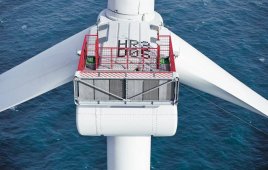This article comes from Hunton & Williams LLP
On October 24, 2016, in Alta Wind I Owner-Lessor C et al. v. United States, Nos. 13-402T et al., the US Court of Federal Claims (the Court) ruled in favor of the owners of six wind farm facilities who had applied for grant funds under Section 1603 of the American Recovery and Reinvestment Act (the 1603 Grant). This case is an important development in the renewable energy area because the Court rejected all of the government’s arguments for reducing the 1603 Grant. Treasury routinely made these same arguments to reduce the 1603 Grants claimed by numerous parties in renewable energy projects that qualified for the 1603 Grant program.
![]() The wind farm owners had sought over $206 million in the litigation, which they alleged the Treasury Department had underpaid, and Court’s decision awarded the entire underpaid amount to the plaintiffs. The Alta Wind case involved 20 plaintiffs and eight complaints, each of which involved the sale and leaseback of wind energy facilities. The developer was both the seller and the lessee in the sale-leaseback transactions.
The wind farm owners had sought over $206 million in the litigation, which they alleged the Treasury Department had underpaid, and Court’s decision awarded the entire underpaid amount to the plaintiffs. The Alta Wind case involved 20 plaintiffs and eight complaints, each of which involved the sale and leaseback of wind energy facilities. The developer was both the seller and the lessee in the sale-leaseback transactions.

With 386 GE and Vestas turbines, the facility is comprised of: Alta I (150 MW), Alta II (150 MW), Alta III (150 MW), Alta IV (102 MW), Alta V (168 MW), Alta X (137 MW) and Alta XI (90 MW).
The Alta Wind case is one of numerous cases in which Treasury reduced grant awards to applicants on the basis that the purchase price paid for renewable energy facilities involved “peculiar circumstances” and required allocation of cost basis to nonqualified intangible assets. As the Court summarized, “[t]he government maintains that basis really should be calculated from the value of each wind farm’s grant eligible constituent parts and their respective development and construction costs, citing a myriad of factors that allegedly made the purchase prices an unfair measure of each wind farm’s value.” The Government also argued in Alta Wind that “the residual method of accounting” under Internal Revenue Code (IRC) Section 1060 was applicable. The Court rejected those lines of attack by Treasury and upheld the cost basis reported by the wind farm owners as evidenced by the purchase price they paid.
A copy of the Alta Wind opinion is available here. The Court had previously granted the government’s motion for full discovery and stayed the wind farm owners’ summary judgment motions. For prior alert, click here. The Alta Wind case is one of a number of Section 1603 Grant cases being litigated in the Court of Federal Claims.
The crux of the dispute in Alta Wind was whether the purchase price paid by the wind farm owners to the developer in the sale-leaseback transactions should be respected as the basis for purposes of calculating their grant award or whether Treasury was entitled to look beyond the stated purchase price to apply a residual valuation analysis. The Court summarized the core dispute in its opinion as follows:
The question in this suit has always been what the basis of Altas I-VI is. If the Court were to follow the Government’s approach in awarding the Section 1603 grants, basis would mean the development and construction costs of each Alta facility–i.e., a grant predicated on the “cost method” of tax valuation. Plaintiffs’ approach, on the other hand, would mean that the Alta Wind facilities’ purchase prices, minus reasonable allocations
The Court recognized as a general rule that “[b]asis, as defined in the IRC, is the cost of property to its owner.” The Court noted that there are exceptions to this general rule, each of which it addressed in its opinion, but soundly rejected the government’s attempt to limit Section 1603 Grant basis to development and construction costs and a “cost method” of tax valuation: “If Congress had intended some other definition of `basis’ to apply in situations like this, then it should have said so when it drafted the statute.”
More from the Hunton & Williams report: https://goo.gl/UXdPdE
Filed Under: Financing




